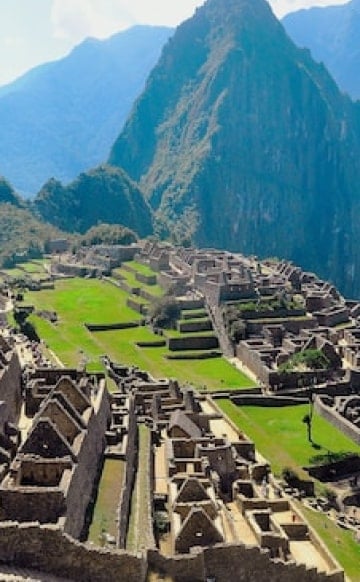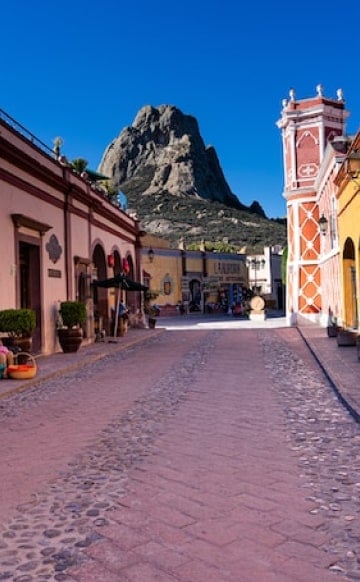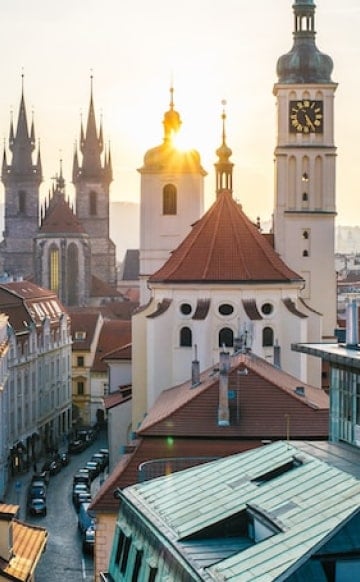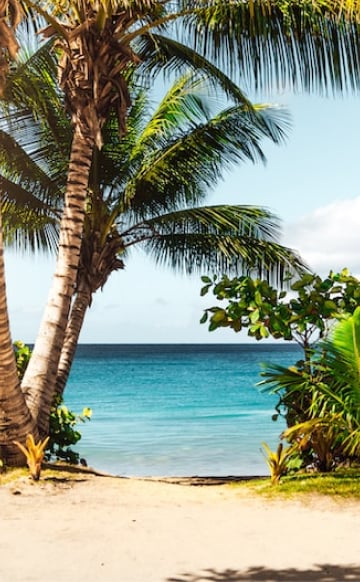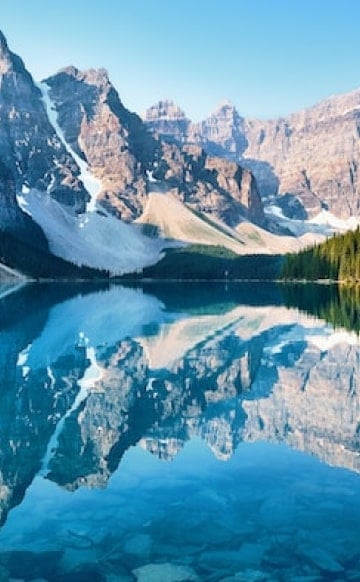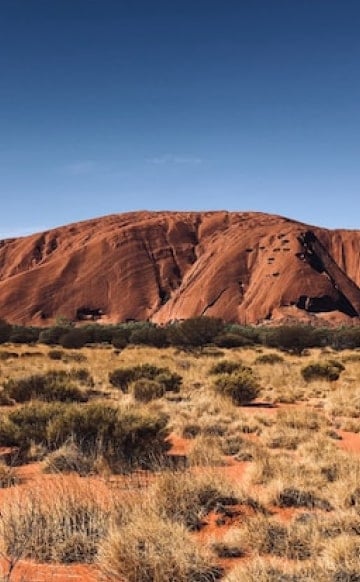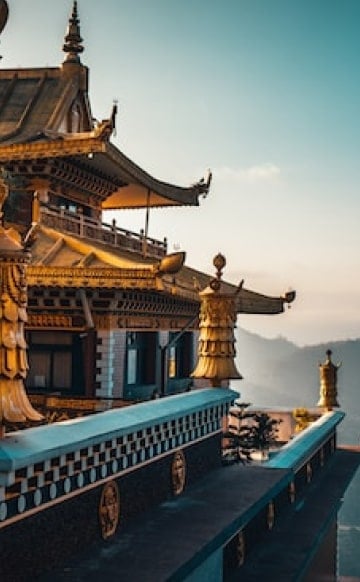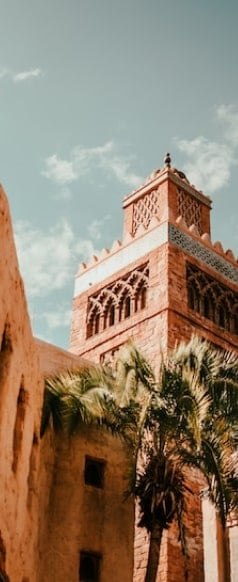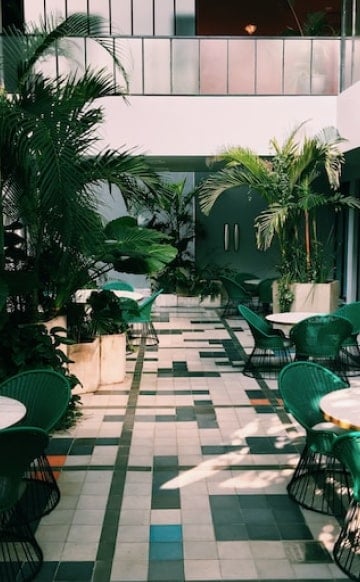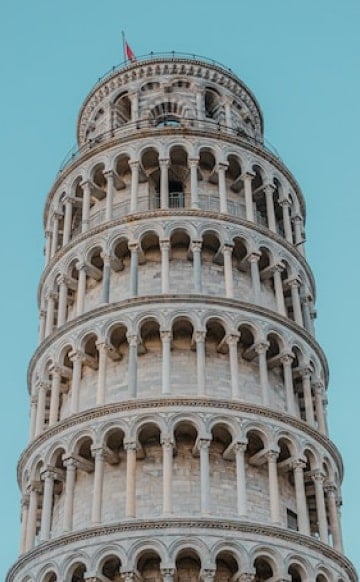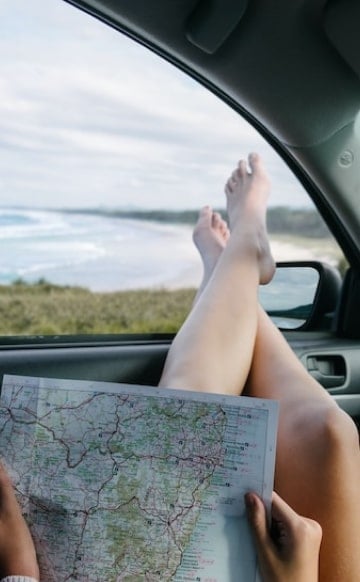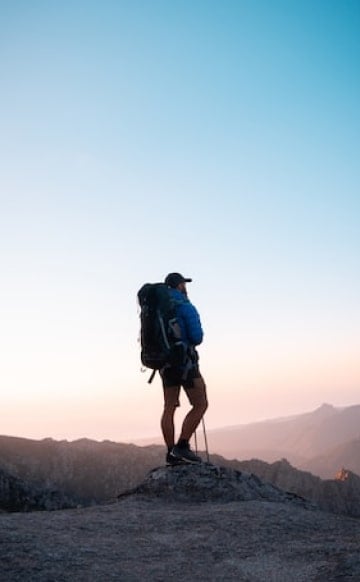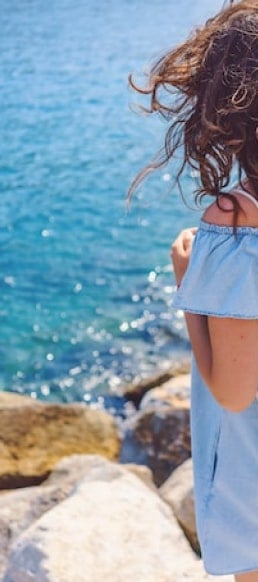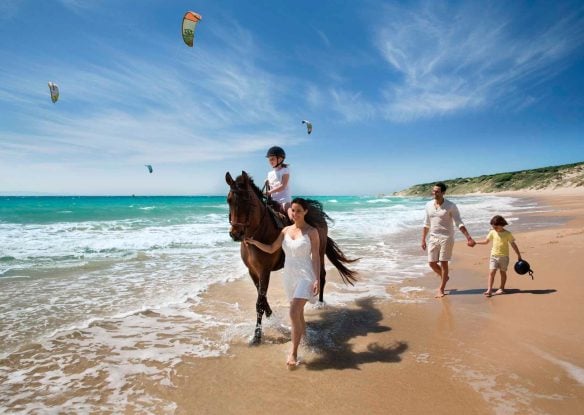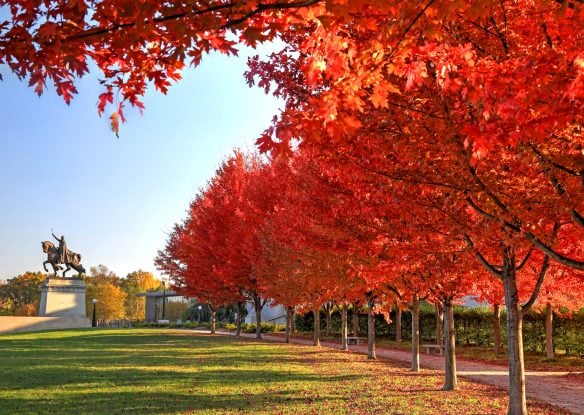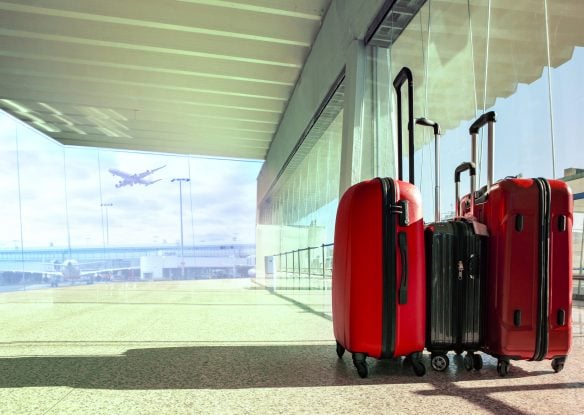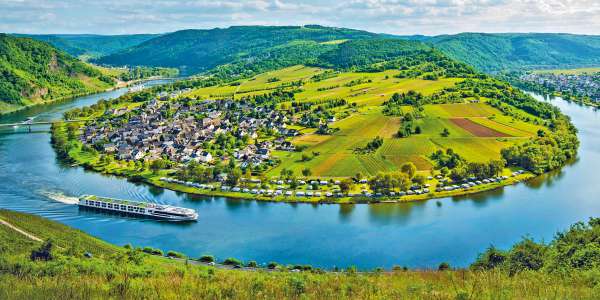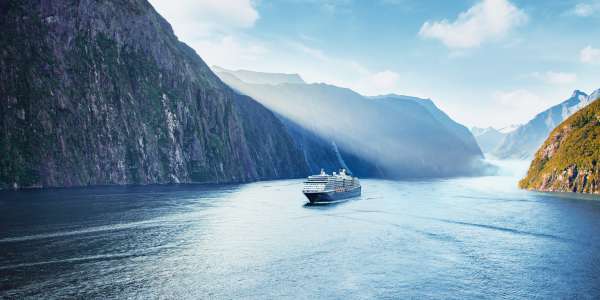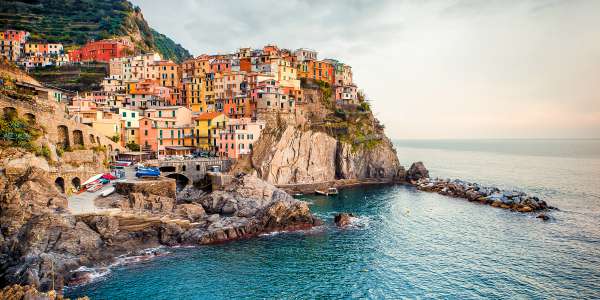Walking the Camino de Santiago is a bucket list item for many. This 500-mile pilgrimage route across northern Spain to Santiago de Compostela is a journey that tests your body, mind, and spirit. Who you are when it’s over is not who you were when it began. To set you up for your best blister- and regret-free Camino de Santiago, here are a few tips from a pilgrim who walked it.

Wear Shoes Your Feet Already Know
The number one tip for walking the Camino is to wear shoes your feet are already familiar with. In other words, shoes you’ve broken in long before stepping foot on the Camino. You won’t need heavy trekking boots for this trail unless you have a beloved and well-worn pair you already know your feet to be happy in. On the Camino, a simple pair of trail runners is sufficient. Even a pair of Tevas or an equivalent sport sandal would do. The most important thing is that your feet have some cushion and that the shoes are snug enough on your feet that there isn’t any rubbing or chafing, as that could lead to some pretty annoying blisters popping up.

Take Care of Your Feet
Your feet are your most prized possession on the Camino. They are what carry you to Santiago de Compostela, and they have the power to make it a painless or painful journey for you. Though everyone has their own tried and true tricks for foot maintenance on the trail, smothering your feet in vaseline before slipping them into your socks is a good and easy one to avoid blisters, as is changing your socks whenever things get a little too moist in your shoe. Should you get any blisters or feel them forming, it’s a good idea to have bandages, like compeed or flexible tape, in your first aid kit to reduce friction or help any already popped blisters heal. If it’s not blisters, it might just be general foot pain you deal with on the Camino. For this reason, it’s a good idea to have an alternative pair of shoes to throw on when you finish the day’s walk, something cushioned, supportive, and breathable like Tevas or Birkenstocks.

Pack the Bare Minimum
Besides wearing tried and tested shoes on your feet, packing light is probably the second most important thing for a successful Camino. Remember, everything you bring, you’ll have to carry on your back. Most pilgrims pack just two to three pairs of hiking clothes, a few extra socks for wet days, and whatever layers will keep you warm and dry if the temperature drops or rain falls. That and travel-size toiletries, a headlamp, a quick dry towel, a sleeping bag or liner, a journal and pen, some clothespins, a first aid kit, and comfy shoes to slip into off the trail. Appearance, refreshingly, doesn’t seem to matter on the Camino, so things like makeup, styling products, accessories, and dressier clothing can be left at home entirely. Figure out what your essentials are, and don’t budge or be tempted to throw something unnecessary in. If you realize you need something you didn’t bring, there are plenty of shops along the trail that cater specifically to pilgrims. As you pack, a general rule of thumb is to aim for a pack weight of 10% of your body weight. Only go heavier if you’re familiar with multi-day backpacking and know your body can handle it.

Start Slow and Go Your Pace
It’s so important on the Camino to find and follow your pace, no matter how tempted you might be to keep up with someone else. The consequence is injury if you take it too hard, too fast. Allow your body to adjust to what you’re doing in that first week on the trail. Don’t push it more than you have to. Take breaks and check in with your body to see how it’s holding up and what it needs, and listen to what it’s telling you. In other words, if that shin is really starting to scream or day after day you notice anything over a certain number of miles triggers pain in your knee or your foot or your back, ease back on the mileage for a day or two or give yourself a rest day altogether. Your body will adjust if you let it, but you must be gentle and give it the chance to do so, especially in those early days.

Be Flexible in Your Schedule and Leave Room for Rest Days
If you can, give yourself plenty of time to complete the Camino de Santiago. On average, it takes anywhere from 30 to 40 days for most to walk the 500 miles from Saint-Jean-Pied-de-Port to Santiago de Compostela. If this sort of mileage is something you’ve never attempted before (and that’s most people), it’s wise to leave room for rest days and short days. You don’t want to rush yourself down the trail if you don’t have to. And, to be honest, you won’t want to either. The trail, not Santiago, is the destination, you’ll come to see. Even if you wind up not taking a rest day at all, you’ll appreciate that you gave yourself that option instead of locking yourself into a 30-day schedule when you really needed 35 days, based on how your body responds to the mileage and task.

Avoid Transferring Your Pack and Making Reservations If You Don't Have To
By all means, transfer your pack and reserve away if that’s the sort of Camino you want and need to walk (no judgment), but if you’d prefer to leave room for a little Camino magic and flexibility, it’s highly recommended to carry your pack and only make an albergue or hotel reservation for the next day, if at all. This will allow you to better listen to your body and respond if it tells you to stop walking earlier than anticipated or to keep going further than you planned for the day. If you had sent your pack ahead or made a reservation in a specific town, you’d be forced to stick to that plan regardless of how your body is feeling.

Start Early and Bring a Headlamp or Flashlight
Regardless of whether you have a guaranteed bed waiting for you at the end of the day’s walk or you’re more of a risk-taker who crosses their fingers for a bed on arrival, it’s a good idea to start every day’s walk on the earlier side (usually, anytime before 8:30 am, 9 am latest). This will allow you to walk more leisurely, take breaks at the cafes en route, and still arrive before the sun sets or, at certain times of the year, arrive before the heat of the day kicks in. Another benefit of starting early and therefore arriving earlier to the albergue is that you get your pick of beds, and a bed for that matter. Starting early also means you may need a headlamp or flashlight. Be sure to pack one just in case you find you like the routine of waking up and hitting the trail before sunrise, as many pilgrims do.

Download the Apps or Buy the Guidebooks
The Camino apps or Camino guidebooks are quintessential on the trail. They lay out the day’s terrain, where the coffee breaks are, and advise about any alternate routes along the way. They’re a great reference while you’re out there on the trail and wondering how much further to the next town. Among the apps, Camino Ninja, Wise Pilgrim, and Buen Camino are some of the most popular. The guidebooks are good too, but keep in mind carrying one is added weight in your pack and the books aren’t likely to be as up-to-date as the apps are. The apps also have a map indicating your live location so you can easily navigate whether you’re on the trail or have somehow strayed off it.

Carry Cash
While credit and debit cards can be used on the Camino, it’s not always a guarantee. Nor are ATMs in every town. A good practice is to have about 100 Euros in cash on you to start, then as that supply dwindles, replenish it in the next big town or city en route. Both albergues and restaurants along the way may be cash only, so you want to make sure you always have at least the amount of a meal and a night’s sleep on you. For reference, about 35 Euros will more than cover your night’s sleep in a shared dorm at an albergue and your pilgrim menu dinner that evening.

Trade Numbers With People You Meet
You are going to meet so many people on the Camino. This is guaranteed. Long walks through the Spanish countryside with “real life” on pause is sure to have you turning to the pilgrim next to you on the trail and diving deep into conversation. And if that doesn’t inspire the connections, the albergue atmosphere will, with its bunkbed-packed rooms and pilgrim meals around the community table. In some form or another, ask that new friend for their number, social media account, or email because, on the Camino, paths that cross can be fleeting. All it takes is one person taking a rest day while the other continues on or one of you walking a bit further than the other, and you never see them again. Trading contact information can also be handy when you accidentally leave something behind at the albergue, as the friends you make who are a few steps behind you might be able to reunite you with that shirt you forgot to grab off the clothesline or trekking poles you left at the bar in the last town.

Always Check for Bed Bugs
Hopefully, bed bugs won’t be part of your Camino experience, but they undoubtedly will be for some. An excellent way to avoid this nightmare altogether is to check your bed upon arrival, especially the seams of the mattress, for any signs of these blood-sucking critters. You’ll also want to leave your bags outside the room or away from the beds until you’re sure the coast is clear. If you do happen to deal with bed bugs on the trail, don’t stress. A high heat cycle through the washer and dryer of all your things should get rid of them. Just be sure to let the host at your albergue know about the issue so they can deal with it before the next wave of pilgrims comes through.

Document Your Journey In Some Way
Be it photo, video, journaling, or sharing on social media, you will want to capture your Camino de Santiago while you’re living it. It’s amazing how quickly the days blur, and you change over the course of the 500 miles. Take five minutes each day to jot something down or the second to snap a photo with you and whoever you’re walking with. Your post-Camino self will love you for it. This is a rich and lengthy experience with far too many memories and moments to expect your mind to remember them all. You’ll want to go back and re-live it when you’re done. Give yourself that chance and document the journey.

Give Yourself Time To Process
In line with giving yourself more days than you think you’ll need to complete the Camino, give yourself time to process it too. If you can, don’t rush back into normal life. Give yourself a buffer day or week to let it all sink in after that emotional and adrenaline-filled arrival into Santiago de Compostela. Let it be a transition, not an immediate reintegration into life and work the day after you land in Santiago. You just walked across a country, after all! Celebrate that. Let that sink in.

